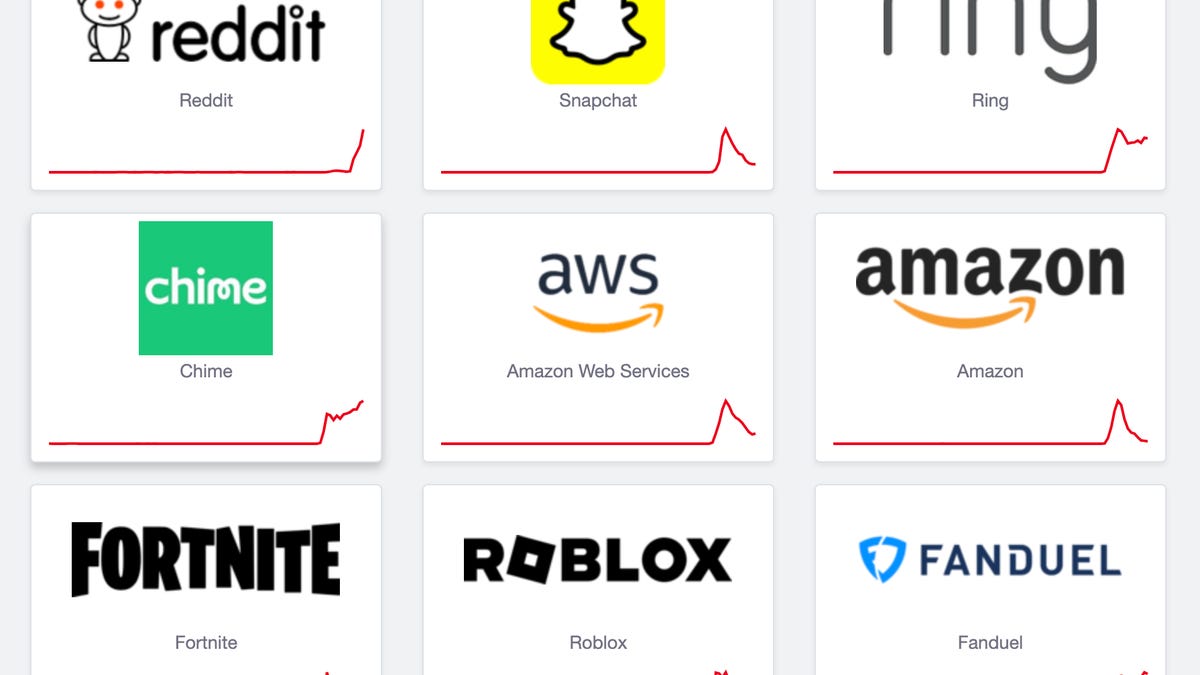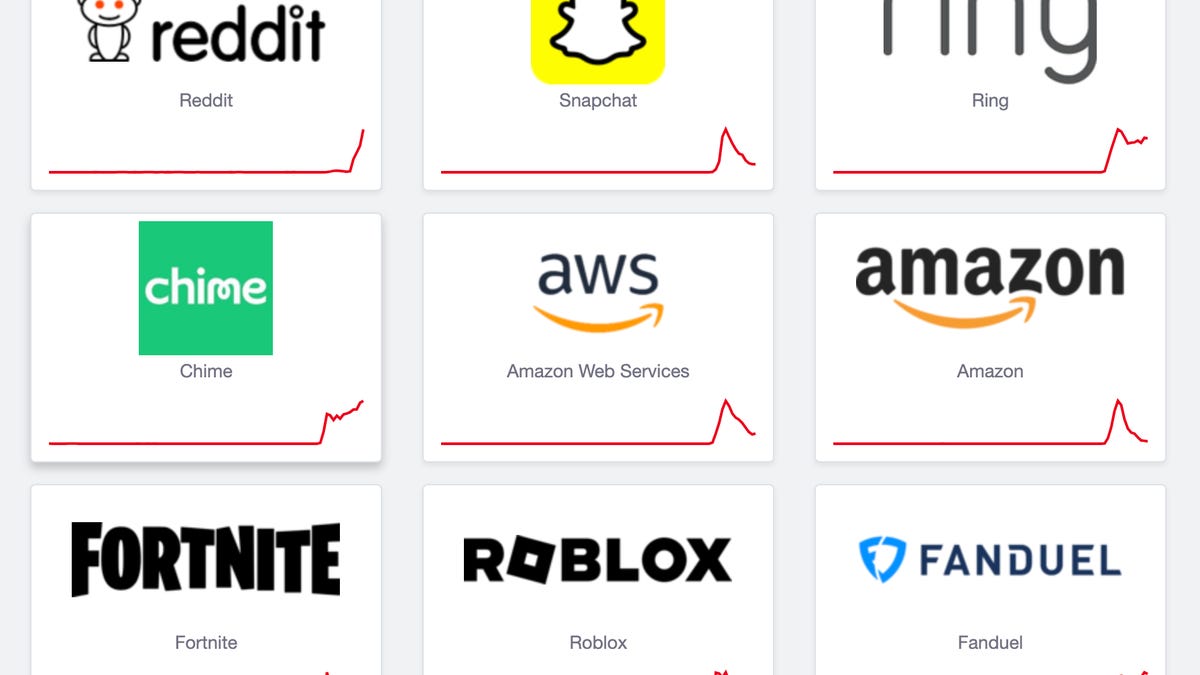Technologies
Pokemon Legends: Z-A Hands-On: Trying Out Real-Time and Mega-Evolution Fights
A 20-minute peek at the highly-anticipated sequel to Pokemon Legends: Arceus.

I wandered the halls of the Anaheim Convention Center days before it would be flooded with tens of thousands of fans for the 2025 Pokemon World Championships, looking for a tucked-away room to get a taste of a game diehard Poke-nerds would give anything to see. For a brief 20 minutes, I got to play Pokemon Legends: Z-A.
Let’s be clear: My time with the upcoming game — split into two 10-minute sessions — was hardly enough to reveal every way Z-A will build on its predecessor. The groundbreaking 2022 title Pokemon Legends: Arceus brought the storied monster-training franchise into an open world set in its distant past — a wilder, less civilized era when Pokemon roamed the land largely unchecked.
Instead, Pokemon Legends: Z-A brings the series into the present — a shift that’s stirred mixed feelings among fans. In my brief hands-on, though, I spotted some promising tweaks to the Arceus formula, especially on the Switch 2 (docked mode, to be exact), where I saw no performance hiccups.
The first 10-minute slice of Pokemon Legends: Z-A focused on trainer battles in a sprawling city. I started with a four-monster team which included familiar faces like Chikorita, Mareep and Weedle, and entered the Battle Zone. There, I could challenge (and be challenged by) other trainers. All of it was part of the mysterious, eponymous Z-A Royale, a competitive league where I began at the very bottom: Z grade, naturally.
The twisting alleys of the Battle Zone hid trainers ready to pounce, but unlike in Arceus, battles here start instantly in the field and play out in real time — enemy Pokemon will chip away at your HP if you don’t send one of your own to fight. Holding L2 targets an opponent, and each of your monster’s moves is mapped to the face buttons (A, B, X, Y), each with its own cooldown. That let me slip in stat-affecting moves like Growl between damage-dealing Tackles — almost like injecting some fast-paced Pokemon Unite DNA into the open-world formula. Swapping Pokemon is simple: Use the directional pad to pick a benched monster, then press up to switch it in.
Like any Pokemon game, trainers can catch you off guard, letting their Pokemon sneak in a few attacks before you send out your own. You can turn the tables by locking on with L2 and choosing an attack from your active Pokemon, making the Battle Zones feel almost like PvP areas. Unlike in Arceus, you can use potions and other healing items between or during battles — just watch out, as real-time attacks don’t pause while you’re in menus.
With my party of level-seven and -eight monsters and just a trio of trainers to beat, this Battle Zone felt like an early section designed to help players get acclimated. There’s no telling how complex future Battle Zones might get — or what other environments might allow battles between trainers (or even wild Pokemon). These areas seem tuned to the Z-A Royale competition, with beaten trainers awarding not just rank-improving tickets but also prize medals (earned for wins and forfeited for losses). Battle Zones take place at night, and at daybreak you’ll receive prize money based on how many medals you’ve won or found lying around.
Pokemon Legends: Z-A’s Mega-Evolution battles
The second 10-minute demo, short as it was, held the flashier attraction: a Mega-Evolution battle that served as a hefty, story-driven boss encounter. While Arceus had plenty of big, strong Pokemon to encounter in the wild, Z-A’s addition of Mega Evolution lets players face beefed-up versions of regular monsters in longer, more challenging fights.
I started the demo chasing a legendary Zygarde in its dog-like 10% form, which led me to a city rooftop and an Absol radiating Mega Power. It’s not the first time Pokemon have bristled with unstable energy — a mysterious, professorly figure named AZ caught up to us, calling it another Rogue Mega Evolution. Just as the creature evolved into Mega Absol, AZ lent us his Lucario to battle the frenzied Pokemon.
This boss battle took the lion’s share of the second demo to beat, building on the real-time combat I’d experienced with trainers and adding its own unique mechanic: When I’d dealt enough damage to the Mega Absol, it would drop colorful Mega Power orbs I could collect. While dangerous to collect — the Mega-Evolved Pokemon hurled attacks my trainer had to dodge or risk losing health — filling the bar let me Mega-Evolve my Lucario to carve off even bigger chunks of the boss’s HP.
What followed was a fun romp and a promising glimpse at the game’s boss battles, with me (the trainer) darting around the small arena to dodge lunges and ranged attacks while managing Lucario’s move cooldowns to chip away at Mega Absol’s health. Some of those moves were damaging, while at least one other — Protect — nullified enemy attacks, a very neat application of an otherwise passive, classic Pokemon move.
After a close shave with my health in the red, I defeated Mega Absol and won an Absolite for my trouble — a stone that would let me attach it to my own Absol to Mega-Evolve it in a future battle.
My 20 minutes with Pokemon Legends: Z-A left a lot of questions unanswered about the upcoming game, which comes out Oct. 16. Would it have the Breath of the Wild-style open-world exploration that made Pokemon Legends: Arceus such a success? What other changes are in store for the switch to a modern-day setting? But at least I can satisfy fan curiosity about the real-time combat: It’s engaging, fast and rewards quick thinking to maximize type advantages. Still, plenty of stones remain unturned for Pokemon Legends: Z-A.
Technologies
An AWS Outage Broke the Internet While You Were Sleeping
Reddit, Roblox and Ring are just a tiny fraction of the 1,000-plus sites and services that were affected when Amazon Web Services went down, causing a major internet blackout.

The internet kicked off the week the way that many of us often feel like doing: by refusing to go to work. An outage at Amazon Web Services rendered huge portions of the internet unavailable on Monday morning, with sites and services including Snapchat, Fortnite, Venmo, the PlayStation Network and, predictably, Amazon, unavailable for a short period of time.
The outage began shortly after midnight PT, and took Amazon around 3.5 hours to fully resolve. Social networks and streaming services were among the 1,000-plus companies affected, and critical services such as online banking were also taken down. You’ll likely find most sites and services functioning as usual this morning, but some knock-on effects will probably be seen throughout the day.
AWS, a cloud services provider owned by Amazon, props up huge portions of the internet. So when it went down, it took many of the services we know and love with it. As with the Fastly and Crowdstrike outages over the past few years, the AWS outage shows just how much of the internet relies on the same infrastructure — and how quickly our access to the sites and services we rely on can be revoked when something goes wrong. The reliance on a small number of big companies to underpin the web is akin to putting all of our eggs in a tiny handful of baskets.
When it works, it’s great, but only one small thing needs to go wrong for the internet to come to its knees in a matter of minutes.
How widespread was the AWS outage?
Just after midnight PT on October 20, AWS first registered an issue on its service status page, saying it was «investigating increased error rates and latencies for multiple AWS services in the US-EAST-1 Region.» Around 2 a.m. PT, it said it had identified a potential root cause of the issue, and within half an hour, it had started applying mitigations that were resulting in significant signs of recovery.
«The underlying DNS issue has been fully mitigated, and most AWS Service operations are succeeding normally now,» AWS said at 3.35 a.m. PT. The company didn’t respond to request for further comment beyond pointing us back to the AWS health dashboard.
Around the time that AWS says it first began noticing error rates, Downdetector saw reports begin to spike across many online services, including banks, airlines and phone carriers. As AWS resolved the issue, some of these reports saw a drop off, whereas others have yet to return to normal. (Disclosure: Downdetector is owned by the same parent company as CNET, Ziff Davis.)
Around 4 a.m. PT, Reddit was still down, while services including Ring, Verizon and YouTube were still seeing a significant number of reported issues. Reddit finally came back online around 4.30 a.m. PT, according to its status page, which was then verified by us.
In total, Downdetector saw over 6.5 million reports, with 1.4 million coming from the US, 800,000 from the UK and the rest largely spread across Australia, Japan, the Netherlands, Germany and France. Over 1,000 companies in total have been affected, Downdetector added.
«This kind of outage, where a foundational internet service brings down a large swathe of online services, only happens a handful of times in a year,» Daniel Ramirez, Downdetector by Ookla’s director of product told CNET. «They probably are becoming slightly more frequent as companies are encouraged to completely rely on cloud services and their data architectures are designed to make the most out of a particular cloud platform.»
What caused the AWS Outage?
AWS hasn’t shared full details about what caused the internet to fall off a cliff this morning. The likelihood is that now it’s deployed a fix, its next step will be to investigate what went wrong.
So far it’s attributed the outage to a «DNS issue.» DNS stands for the Domain Name System and refers to the service that translates human-readable internet addresses (for example, CNET.com) into machine-readable IP addresses that connects browsers with websites.
When a DNS error occurs, the translation process cannot take place, interrupting the connection. DNS errors are common are common internet roadblocks, but usually happen on small scale, affecting individual sites or services. But because the use of AWS is so widespread, a DNS error can have equally widespread results.
According to Amazon, the issue is geographically rooted in its US-EAST-1 region, which refers to an area of North Virginia where many of its data centers are based. It’s a significant location for Amazon, as well as many other internet companies, and it props up services spanning the US and Europe.
«The lesson here is resilience,» said Luke Kehoe, industry analyst at Ookla. «Many organizations still concentrate critical workloads in a single cloud region. Distributing critical apps and data across multiple regions and availability zones can materially reduce the blast radius of future incidents.»
Was the AWS Outage caused by a cyberattack?
DNS issues can be caused by malicious actors, but there’s no evidence at this stage to say that this is the case for the AWS outage.
Technical faults can, however, pave the way for hackers to look for and exploit vulnerabilities when companies’ backs are turned and defenses are down, according to Marijus Briedis, CTO at NordVPN. «This is a cybersecurity issue as much as a technical one,» he said in a statement. «True online security isn’t only about keeping hackers out, it’s also about ensuring you can stay connected and protected when systems fail.»
In the hours ahead, people should look out for scammers hoping to take advantage of people’s awareness of the outage, added Briedis. You should be extra wary of phishing attacks and emails telling you to change your password to protect your account.
Technologies
A New Bill Aims to Ban Both Adult Content Online and VPN Use. Could It Work?
Michigan representatives just proposed a bill to ban many types of internet content, as well as VPNs that could be used to circumvent it. Here’s what we know.

On Sept. 11, Michigan representatives proposed an internet content ban bill unlike any of the others we’ve seen: This particularly far-reaching legislation would ban not only many types of online content, but also the ability to legally use any VPN.
The bill, called the Anticorruption of Public Morals Act and advanced by six Republican representatives, would ban a wide variety of adult content online, ranging from ASMR and adult manga to AI content and any depiction of transgender people. It also seeks to ban all use of VPNs, foreign or US-produced.
Don’t miss any of our unbiased tech content and lab-based reviews. Add CNET as a preferred Google source.
VPNs (virtual private networks) are suites of software often used as workarounds to avoid similar bans that have passed in states like Texas, Louisiana and Mississippi, as well as the UK. They can be purchased with subscriptions or downloaded, and are built into some browsers and Wi-Fi routers as well.
But Michigan’s bill would charge internet service providers with detecting and blocking VPN use, as well as banning the sale of VPNs in the state. Associated fines would be up to $500,000.
What the ban could mean for VPNs
Unlike some laws banning access to adult content, this Michigan bill is comprehensive. It applies to all residents of Michigan, adults or children, targets an extensive range of content and includes language that could ban not only VPNs but any method of bypassing internet filters or restrictions.
That could spell trouble for VPN owners and other internet users who leverage these tools to improve their privacy, protect their identities online, prevent ISPs from gathering data about them or increase their device safety when browsing on public Wi-Fi.
Read more: CNET Survey: 47% of Americans Use VPNs for Privacy. That Number Could Rise. Here’s Why
Bills like these could have unintended side effects. John Perrino, senior policy and advocacy expert at the nonprofit Internet Society, mentioned to CNET that adult content laws like this could interfere with what kind of music people can stream, the sexual health forums and articles they can access and even important news involving sexual topics that they may want to read. «Additionally, state age verification laws are difficult for smaller services to comply with, hurting competition and an open internet,» John added.
The Anticorruption of Public Morals Act has not passed the Michigan House of Representatives committee nor been voted on by the Michigan Senate, and it’s not clear how much support the bill currently has beyond the six Republican representatives who have proposed it. As we’ve seen with state legislation in the past, sometimes bills like these can serve as templates for other representatives who may want to propose similar laws in their own states.
Could VPNs still get around bans like these?
That’s a complex question that this bill doesn’t really address. When I asked NordVPN how easy it would be track VPN use, privacy advocate Laura Tyrylyte explained, «From a technical standpoint, ISPs can attempt to distinguish VPN traffic using deep packet inspection, or they can block known VPN IP addresses. However, deploying them effectively requires big investments and ongoing maintenance, making large-scale VPN blocking both costly and complex.»
Also, VPNs have ways around deep packet inspection and other methods. CNET senior editor Moe Long mentioned obfuscation like NordWhisper, a counter to DPI that attempts to make VPN traffic look like normal web traffic so it’s harder to detect.
There are also no-log features offered by many VPNs to guarantee they don’t keep a record of your activity, and no-log audits from third parties like Deloitte that, well, try to guarantee the guarantee. There are even server tricks VPNs can use like RAM-only servers that automatically erase data each time they’re rebooted or shut down.
If you’re seriously concerned about your data privacy, you can look for features like these in a VPN and see if they are right for you. Changes like these, even on the state level, are one reason we pay close attention to how specific VPNs work during our testing, and make sure to recommend the right VPNs for the job, from speedy browsing to privacy while traveling.
Correction, Oct. 9: An earlier version of this story incorrectly stated how RAM-only servers work. RAM-only servers run on volatile memory and are wiped of data when they are rebooted or shut down.
Technologies
AWS Outage Explained: Why Half the Internet Went Down While You Were Sleeping
Reddit, Roblox and Ring are just a tiny fraction of the hundreds of sites and services that were impacted when Amazon Web Services went down.

The internet kicked off the week the way that many of us often feel like doing: by refusing to go to work. An outage at Amazon Web Services (AWS) rendered huge portions of the internet unavailable on Monday morning, with sites and services including Snapchat, Fortnite, Venmo, the PlayStation Network and, predictably, Amazon, unavailable for a short period of time.
AWS is a cloud services provider owned by Amazon that props up huge portions of the internet. As with the Fastly and Crowdstrike outages over the past few years, the AWS outage shows just how much of the internet relies on the same infrastructure — and how quickly our access to the sites and services we rely on can be revoked when something goes wrong.
Just after midnight PT on October 20, AWS first registered an issue on its service status page, saying it was «investigating increased error rates and latencies for multiple AWS services in the US-EAST-1 Region.» Around 2 a.m. PT, it said it had identified a potential root cause of the issue, and within half an hour, it had started applying mitigations that were resulting in significant signs of recovery.
«The underlying DNS issue has been fully mitigated, and most AWS Service operations are succeeding normally now,» AWS said at 3.35 a.m. PT. The company didn’t respond to request for further comment beyond pointing us back to the AWS health dashboard.
Around the time that AWS says it first began noticing error rates, Downdetector saw reports begin to spike across many online services, including banks, airlines and phone carriers. As AWS resolved the issue, some of these reports saw a drop off, whereas others have yet to return to normal. (Disclosure: Downdetector is owned by the same parent company as CNET, Ziff Davis.)
Around 4 a.m. PT, Reddit was still down, while services including Verizon and YouTube were still seeing a significant number of reported issues.
-

 Technologies3 года ago
Technologies3 года agoTech Companies Need to Be Held Accountable for Security, Experts Say
-

 Technologies3 года ago
Technologies3 года agoBest Handheld Game Console in 2023
-

 Technologies3 года ago
Technologies3 года agoTighten Up Your VR Game With the Best Head Straps for Quest 2
-

 Technologies4 года ago
Technologies4 года agoVerum, Wickr and Threema: next generation secured messengers
-

 Technologies4 года ago
Technologies4 года agoBlack Friday 2021: The best deals on TVs, headphones, kitchenware, and more
-

 Technologies4 года ago
Technologies4 года agoGoogle to require vaccinations as Silicon Valley rethinks return-to-office policies
-

 Technologies4 года ago
Technologies4 года agoOlivia Harlan Dekker for Verum Messenger
-

 Technologies4 года ago
Technologies4 года agoiPhone 13 event: How to watch Apple’s big announcement tomorrow
